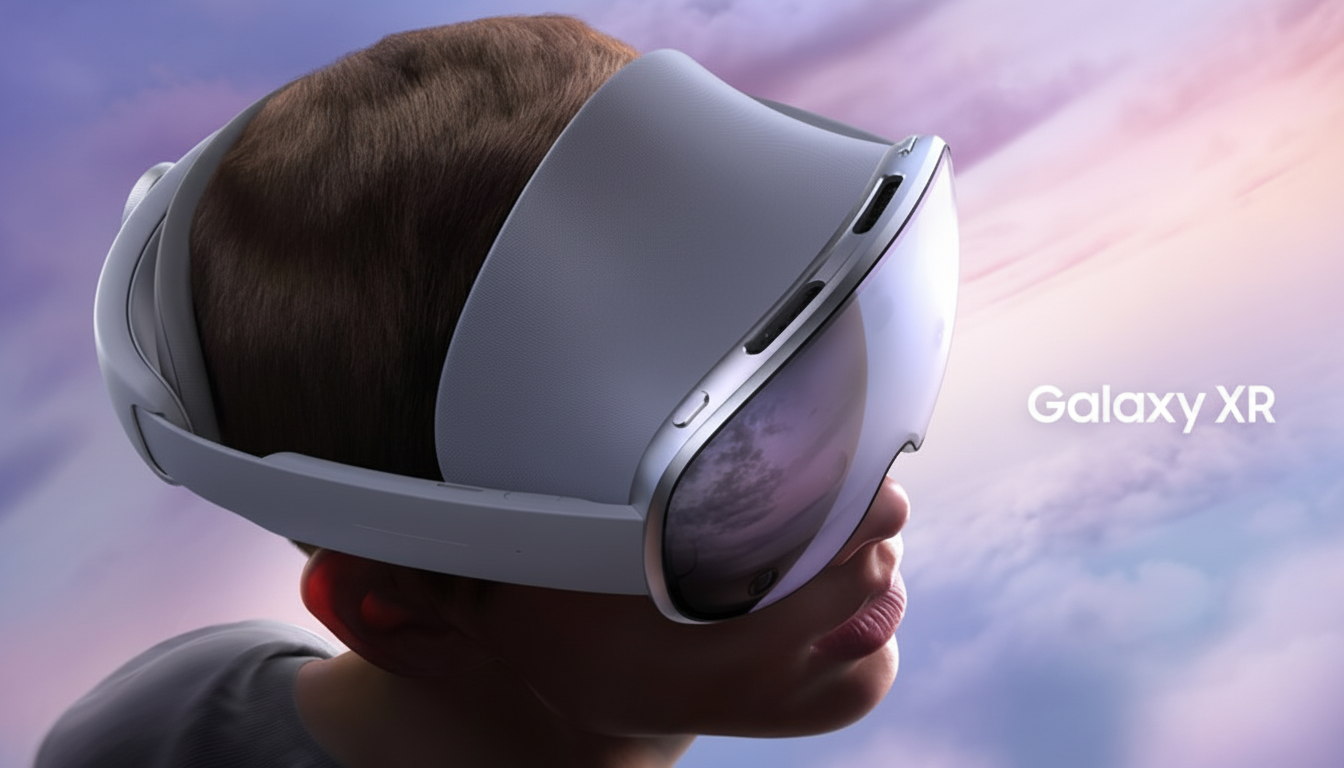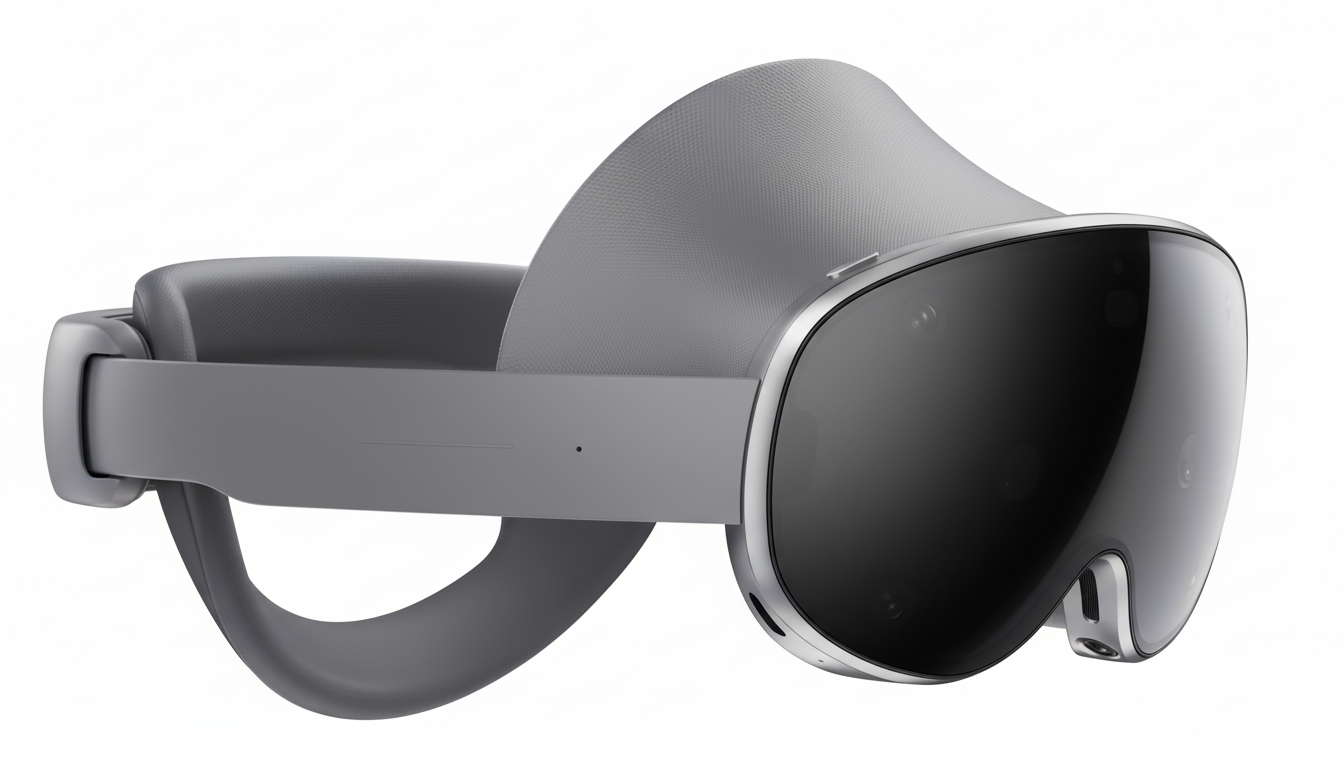I got to spend some time with Samsung’s newly announced Galaxy XR, and for the first time it feels like we have a high-end mixed reality headset that was made for more than just early adopters. It is lighter, more user-friendly and significantly cheaper than its nearest competitor, transforming a futuristic notion into one that feels exhilaratingly accessible.
Design Focused on Comfort and Everyday Awareness
The immediate difference is fit. At 19.2 ounces, Galaxy XR is much lighter than the premium Apple headset, with a halo-style strap and a rear dial to balance the heft. I did not have to keep pushing up the visor in order for it to stay put; I adjusted it once and forgot about it.
- Design Focused on Comfort and Everyday Awareness
- Day-one intuitive controls for hand and eye input
- Engaging content with practical everyday value
- For Displays and Sensors, Clarity Is Key
- Performance gains and the battery life trade-offs
- Pricing that can grow the audience for mixed reality
- Why it feels ready for everyone, not just enthusiasts

Samsung leaves the lower edge open by default, which lets you stay oriented in physical space, with passthrough cameras driving the rest of your surroundings. Snap-on light blockers are part of the package if you prefer a more sealed, theater-like experience. It’s a smart compromise: situational awareness for work and play, immersion on call.
Day-one intuitive controls for hand and eye input
Hand tracking was solid out of the gate. You aim with a tap, you select with a pinch, and you drag or scroll by pinching and holding. Two-handed rotations took a beat, but otherwise everything felt as natural as picking out an app on a phone. Eye tracking is standard as a second input layer, and Samsung will offer motion controllers for pairing, with optional support for traditional Bluetooth gamepads.
It is the first device with Google’s Android XR, and it showed. The UI flows into muscle memory if you’re coming from an Android device or visionOS: a floating app grid, windows that resize (and snap) around your space, and multitasking that clings to where you put things. Chrome, YouTube, and Google Maps were quickly set on a map directly around my desk and moved just far enough to the snap point.
Engaging content with practical everyday value
Maps was the star. A 3D city model gave me a bird’s-eye view of Manhattan, and I could then leap into spatial 360-degree interiors for certain venues. It’s not a gamey simulation so much as something like a visual reconnaissance tool, and it offers hints about how travel planning and local search might change on XR. A 180-degree cinematic trailer developed for Android XR also showed clear depth and scale with little to no motion sickness, too.
It plays well with existing Android apps, which counts for a lot of day-one value. Analysts at IDC have consistently said that easy-to-use software and smooth onboarding are key to maintaining AR/VR momentum, and Galaxy XR’s attitude of “it should just work like your phone but around you” plays into that wisdom.
For Displays and Sensors, Clarity Is Key
Samsung uses micro‑OLED displays providing a resolution of 3,552 x 3,840 pixels per eye, or 29 million in total, and a horizontal field of view of 109 degrees. Text readability and UI edges are nice and crisp, something where mixed reality headsets tend to fall down. For context, Meta’s less expensive Quest 3 has a per-eye resolution of 2,064 by 2,208; Galaxy XR’s high pixel density and improved optics further reduce the screen‑door effect that can be an immersion buster.

Two 6.5-megapixel stereoscopic cameras manage passthrough, supported by a squad of outward and inward sensors for spatial mapping, and hand and eye tracking. It’s that sensor fusion that allows the passthrough view to nearly line up with your natural viewpoint and keep lag as low as possible while reducing warping, which is generally discomforting. Display Supply Chain Consultants has observed that micro‑OLED yields remain a significant cost driver in the industry, emphasizing why Samsung’s visual clarity at this price is a standout.
Performance gains and the battery life trade-offs
Powering the headset is Qualcomm’s Snapdragon XR2+ Gen 2, which, according to Qualcomm, comes with up to a 15% faster peak GPU clock and up to a 20% faster peak CPU clock when compared to the XR2 Gen 2. The additional headroom is apparent in glimpses of high-res UI and clean passthrough blending.
Battery life on the wired model is up to two hours in mixed use or about 2.5 hours for video, and it weighs 10.7 ounces. It’s not a productivity machine for all day, but it matches the category’s current limits without strapping extra weight to your face. Swappable packs would be a cool potential twist for pros in the future.
Pricing that can grow the audience for mixed reality
At $1,799, the Galaxy XR is no deep discount, but it comes in at less than half the cost of Apple’s flagship while also leapfrogging comfort and familiarity. Compared with midrange options such as the Meta Quest 3, you’re paying for higher-quality optics, better build and a more refined MR-first experience. Samsung and Google are packaging subscriptions to sweeten early ownership, which may help absorb the front-end cost.
Why it feels ready for everyone, not just enthusiasts
Mass-market readiness is not about one spec; it’s the absence of friction. Galaxy XR nails the essentials — fit, clarity, easy inputs and everyday apps — without breaking the bank or resorting to options that are overly complex. It also helps that the Android XR foundation is open: as we saw with smartphones, a multi-vendor ecosystem has a tendency to spur app catalogs and hardware variety. Standards like OpenXR from the Khronos Group should help to minimize this fracturing and make life easier for developers.
It’s the first mixed reality headset where, after years of demoing and costly prototypes, I can imagine telling you: This is something for a whole lot more people than just hardcore enthusiasts and developers.
Assuming Samsung and its partners keep the app pipeline flowing, Galaxy XR won’t just challenge the category leader — it might drive growth of the category itself.

